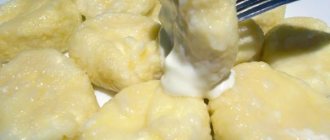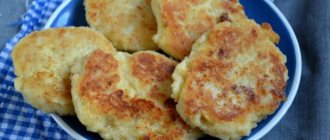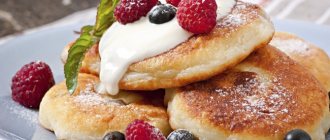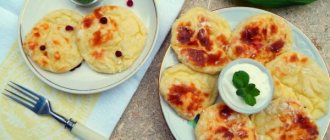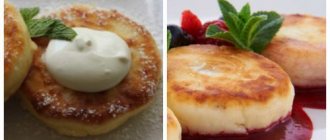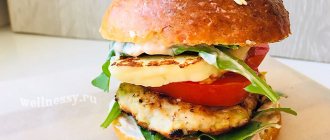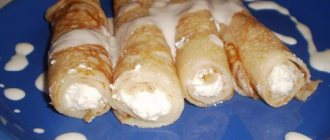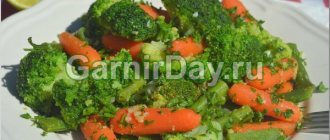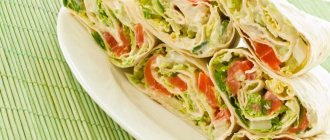The benefits and harms of cottage cheese pancakes
Cheesecakes are nutritious and have a pleasant taste, the main and main component of which is cottage cheese. They are recommended for use by people of all ages, especially children, teenagers and the elderly. However, there is a category of the population for which cheesecakes may be harmful.
| The benefits of cheesecakes | Damage to cheesecakes |
| 1. Easy digestibility of the product. 2. Consumption normalizes the activity of the body’s digestive system. 3. When frequently included in the diet, this dish improves metabolic processes in the body. 4. The ingredients included in the composition take part in improving the nervous system. 5. Eating low-calorie cheesecakes helps you lose extra pounds. 6. Cheesecakes are included in the menu for hypertension, liver and kidney diseases. 7. Cottage cheese, which is part of cheesecakes, supplies the body with protein, calcium, phosphorus, milk fat, and vitamins. 8. Frequent consumption of the dish has the ability to improve the microflora in the intestines. | 1. Oil for frying cheesecakes releases harmful carcinogens that contribute to the development of cancer. 2. Those who suffer from allergic reactions should consume cheesecakes with caution: they may contain products that cause such a reaction in the body. 3. Too frequent and excessive consumption of high-calorie cheesecakes with the addition of fatty cottage cheese and butter can lead to obesity and digestive problems. |
What do calories consist of?
There are a great many recipes for cute curd dumplings. They are prepared with semolina or flour, with the obligatory addition of eggs, sugar, and salt. To enhance the taste, the basic ingredients are often supplemented with raisins, dried apricots, apples, bananas, candied fruits, and cocoa. But the basis of the recipe is cottage cheese.
It’s not difficult to calculate how many calories are in cheesecakes. Their quantity is determined by the nutritional value of all products contained in the recipe. Housewives should be especially careful when choosing cottage cheese: the higher its fat content, the more caloric the cheesecakes will be. Additions of dried fruits and other sweets significantly increase this indicator. Those who are losing weight should avoid using such ingredients.
Below are examples of the nutritional value of dishes using cottage cheese of different fat contents.
Secrets of delicious cheesecakes
Cottage cheese pancakes will be appetizing, dietary (or high-calorie) if you follow the recommendations of experienced housewives and master the nuances of preparation.
Unfortunately, the dish does not always turn out perfect: often the cheesecakes are fried until the crust is golden brown, but remain raw in the middle, they turn out to be too dry or sour in taste, and even worse, they spread across the pan so that it is impossible to give them the desired round shape.
In order for the cheesecakes to be fully baked and look appetizing, you need to use the following secrets:
- Buy fresh cottage cheese: no unpleasant sourness or bitterness and no extra whey. It is advisable to squeeze it well, otherwise you will have to dry it by increasing the amount of flour. It’s best to let the excess moisture drain and crush the cottage cheese by beating in a blender, then the cheesecakes will come out more tender. Dry cottage cheese, on the contrary, is recommended to be diluted with kefir.
- When adding eggs to cheesecakes, it is important to follow the norm . Place 1 egg per approximately 250 g of cottage cheese. If you add more, the dough will be too liquid and you will have to add extra flour again. Only proteins are added to dietary cheesecakes. It is recommended to separate the yolks from the whites by beating them separately.
- Be careful with added sugar . When you stir the dough, it will melt and turn into a liquid syrup, then you will need extra flour again. The sugar content varies in different recipes, it is best to add it to taste.
- To brighten up the taste, it is recommended to add salt, vanillin, and various spices . It can also be fresh fruits or berries served with cheesecakes.
- To obtain soft curds, you need to add less flour and substitutes to the dough . They will be lush if semolina is added. Just after mixing, you should first let the semolina swell for a few minutes, and then make the cheesecakes. The dough should be in the form of a homogeneous thick mass, from which it is easy to make flat cakes.
- To improve the taste of cheesecakes, it is recommended to add grated nuts and carrots , dried lingonberries and cranberries, vanilla powder, and poppy seeds.
- During frying it is necessary cover the pan tightly, then the curds will rise well and be soft and juicy.
- When baking in the oven, baking powder should be added to the dough .
- To prevent the curds from losing their fluffiness, after turning off the oven they should not be taken out immediately , but wait about 10 minutes.
- Before forming the dough, you must not be lazy and wipe the cottage cheese by passing it through a blender . The difference will be immediately noticeable: if the cottage cheese takes on a homogeneous mass, the cheesecakes will turn out much tastier.
- You should form the cheesecakes with wet hands , then the dough will not stick to your fingertips.
- Be sure to pay attention to the size of the cakes: they should not be too large or thick . This way it will be difficult to turn them over and they will be soggy in the middle. It is best to spoon out the curds using a tablespoon.
- To get a golden and ruddy crust, you need to pour oil, heat the frying pan well , then add the cheesecakes, reduce the heat and cover with a lid. A tall frying pan with a thick bottom is best.
Calorie content of cheesecakes fried in a frying pan
Few people know how many calories are contained in cottage cheese pancakes prepared in different ways.
The calorie content of cheesecakes cooked in a frying pan is always higher than that of a baked dish in the oven. This is due to the use of vegetable oil, which adds calories to the finished dish.
Cheesecakes in a frying pan are higher in calories due to the use of vegetable oil for frying.
For example, cottage cheese pancakes prepared according to the same recipe: in a frying pan - 220 kcal, and baked in the oven - 170 kcal.
Cooking cheesecakes in a frying pan also requires dexterity. A finished dish on the outside may be completely raw on the inside. Curd products sometimes spread out or stick to the pan.
Here are a few rules for frying cheesecakes:
- The dish requires the use of a fresh, semi-dry curd product. Excess acid should not be masked by sugar.
If the cottage cheese contains excess whey, you will have to add more flour, and the product will turn out rubbery.
- Excess eggs make the cheesecake runny. To prepare a dietary dish, you can use only protein.
- To prevent the cakes from sticking to the frying pan, they need to be placed on a hot dish, first dipped in flour (preferably corn).
- In order for the dish in the frying pan to be fully cooked, it must be steamed under a closed lid.
Classic cottage cheese pancakes
The most common recipe contains constant ingredients that can change only slightly.
Ingredients:
- 400-450 g of cottage cheese;
- 2 eggs;
- 100 g flour;
- 40-50 ml oil for frying;
- salt and sugar - to taste.
Preparation:
- The prepared cottage cheese should be placed in a bowl and blended with a blender to obtain a thick mass.
- Add eggs, flour, salt and sugar, mix very well.
- Pour flour onto a cutting surface and form the dough into a sausage with a diameter of no more than 5-7 cm.
- Cut into small flat cakes, about 0.8 cm thick.
- Roll the resulting curds in flour, giving them the correct rounded shape.
- Pour oil into the pan, then arrange the tortillas, covering with a lid. Fry the products until golden brown, turning them over to the other side. Continue cooking with the lid closed.
- Place the finished flatbreads on a flat, wide plate to cool.
Diet cheesecakes in the oven
Cheesecakes made from cottage cheese, the calorie content of which is reduced due to the fact that they are not fried in oil, but baked, can be included in the diet of people with a sick stomach or liver. They are also recommended for children.
Components:
- 450-500 g of cottage cheese;
- 3 eggs;
- 50-60 g semolina;
- 1 pack of sugar (vanilla);
- ½ tsp. soda (slaked);
- 1 tbsp. fresh cherries (can be frozen, pitted);
- 50 g sugar;
- a pinch of salt;
- vegetable oil).
Preparation:
- It is advisable to grind the cottage cheese using a blender.
- Add the rest of the products from the list to the mixture and continue stirring.
- Place the resulting dough in a cool place so that the semolina swells a little and becomes softer.
- Take out the silicone molds for baking gingerbread cookies, after greasing them with oil.
- Using a spoon, do not fill the holes completely with dough, as it will rise a little due to the slaked soda. To extinguish it, you need to drip lemon juice or vinegar.
- Place the pans in the preheated oven. At 180° the curds are baked for about 25-30 minutes.
- When the curds are ready, carefully remove them and place them on a plate to cool.
How many calories are in low-fat cottage cheese?
Fermented milk product belongs to the dietary category. It is made from skim milk. It is believed that cottage cheese with zero fat content does not harm the figure at all. And it is true. Low-fat cottage cheese, whose calorie content is only 88-110 Kcal, does not add extra pounds. But that's not all the advantages. The low fat content of cottage cheese promotes the rapid absorption of calcium from it.
Important! When choosing dairy products with zero fat content, preference should be given to those that have a minimum shelf life and sale.
Recipe for dietary banana cheesecakes without flour
Cottage cheese pancakes, which are low in calories (since they do not contain butter, flour, or sugar), turn out delicious. It is better to choose overripe bananas that are as soft as possible.
Ingredients:
- 300 g cottage cheese;
- 1 medium banana;
- 1 egg;
- 30 g bran.
Cooking steps:
- Grind the cottage cheese, you can use a fork and beat well.
- Mash the banana separately until pureed.
- Place banana and egg into cottage cheese.
- Take a certain amount of dough with a tablespoon, form into flat cakes, sprinkle with bran so that they do not stick to your hands.
- Take a baking sheet, line it with parchment, lay out the cakes.
- The baking temperature should be 180°, the time should be 45 minutes.
It is recommended to eat the prepared dish with sweets.
Cheesecakes "Fitness"
The calorie content of cheesecakes made from 9 percent or completely fat-free cottage cheese is the lowest. For people who control their weight, this is the best option for preparing a dessert or main dish.
What will it take to create this unique dish?
- Cottage cheese – 200 g;
- buckwheat flour – 50 g;
- egg white – 2 pcs.;
- sugar substitute (stevioside) - to taste;
- rye bran – optional;
- coconut oil for greasing the pan.
The ingredients should be mixed until you obtain a mass that has a homogeneous consistency. With moistened hands, you need to form the cheesecakes, after which they need to be rolled in rye bran. Fry in a greased coconut oil and well-heated frying pan with a non-stick coating.
Recipe for dietary cheesecakes with rice flour and dried fruits
Components:
- 400 g cottage cheese;
- 60-70 g rice flour;
- 1 egg;
- 40 g sugar;
- 30 g each of raisins and dried apricots;
- 30 ml coconut oil.
Preparation steps:
- Mix the egg with cottage cheese. This can be done with a fork or using a blender.
- Pour boiling water over dried apricots and raisins, then keep in hot water to swell.
- Grind dried apricots and mix with raisins.
- Add sugar and rice flour and add dried fruits.
- Sprinkle some of the rice flour onto a cutting surface and shape the dough into a sausage.
- Cut the flatbreads and then roll them in rice flour.
- Fry the cheesecakes in coconut oil.
If you take a frying pan with a non-stick coating, the dish will turn out without oil.
How to make cheesecakes dietary: recipes for losing weight
Of course, the main ingredient of dietary curd crumpets is low-fat cottage cheese . As we have already found out earlier, the calorie content of cheesecakes made from low-fat cottage cheese is much lower. By the way, you can degrease it at home. There are also several basic secrets that will help make cheesecakes dietary:
- Use whites instead of whole eggs;
- Instead of wheat flour, you can use corn, oat, rice, coconut flour;
- Instead of sugar, you can use sweeteners; a good alternative is stevia;
- It is not at all necessary to fry the cheesecakes; they can be baked in the oven.
In order not to add sugar to the dish, you can add more dried fruits or a ripe banana.
Recipe for dietary banana cheesecakes without flour
You will need:
- 0.5 kg low-fat cottage cheese;
- 1 ripe banana;
- 2 eggs;
- 30-40 g oatmeal;
- Vanillin.
To get started, mash the banana with a fork or puree it in a blender. Then beat the eggs, add vanillin, prepared banana puree, and cottage cheese. It is best to grind oatmeal into flour using a coffee grinder and then add it to the curd dough. You can fry in a non-stick frying pan, after greasing it with a drop of oil, or bake in the oven. For the second method , roll each crumpet in oatmeal and place on a parchment-lined baking sheet. These cheesecakes should be baked for 25-30 minutes, until golden brown. You can also use silicone molds. The calorie content of cheesecakes prepared according to this recipe is 140 kcal per serving.
Please note that when preparing dietary cheesecakes it is very important to use the right cottage cheese. Too dry, crumbly, grainy will not work. If you buy cottage cheese at the market, make sure that it is not too wet. For a dietary version of the dish, an excellent option is creamy cottage cheese in briquettes.
Recipe for dietary cheesecakes with rice flour and dried fruits
To prepare these cheesecakes use:
- 300 g. cottage cheese;
- 1 egg;
- 3 tbsp. rice flour (if you can’t buy it, make it yourself from rice using a coffee grinder);
- Raisins, dried apricots, dried fruits to your taste;
- Vanilla extract.
To prepare, mix cottage cheese with egg, add flour and vanilla extract. It is best to pre-soak dried fruits in hot water, and then rinse well and add to the rest of the ingredients. The dough needs to be refrigerated for 15 minutes. Next, roll each cheesecake in flour and fry in a non-stick frying pan without oil. The calorie content of such cheesecakes is 155 kcal per 100 grams. You can serve with natural yogurt without additives or with honey.
you can use corn flour instead of rice flour . Then the donuts will turn out to be an appetizing golden color. Using these diet recipes for making cheesecakes, you don’t have to worry about calories. Eat your favorite dish for breakfast or as a snack and stay slim!
With prunes and dried apricots
Components:
- 200 g cottage cheese;
- 50-60 g flour;
- 1 egg;
- 40 g sugar;
- 5-6 medium prunes;
- 5-6 medium dried apricots;
- 30 ml oil.
Cooking steps:
- For convenience, pour cottage cheese into a deep and wide container, then beat in the egg and add sugar. Stirring, bring the dough until smooth.
- Pour boiling water over dried fruits (they will become softer), after 10-15 minutes. chop and add them to the dough.
- With wet hands, take the dough in small portions, form into balls, and then press them lightly.
- Place the cheesecakes in a preheated frying pan with oil.
- Bake the curds until golden brown.
Low-fat cottage cheese with honey
This is one of the favorite recipes of nutritionists. And this is not surprising. Low-fat cottage cheese, whose calorie content does not exceed 110 kcal, and honey are considered a storehouse of biologically active substances. The latter contains antioxidants, minerals, and vitamins. It supports the immune system, increases the body's resistance and accelerates metabolism. When low-fat cottage cheese enters the body along with honey, the brain receives a portion of glucose.
This dessert is not only healthy, but also very satisfying. When preparing it, it is better to maintain a certain proportion: add a couple of coffee spoons of natural honey to 200 g of cottage cheese. Then the benefits of the dish will be more tangible. Low-fat cottage cheese is, without a doubt, healthy. And if you use it “correctly,” it can bring double or even triple benefits to the body. The main thing is not to abuse it, you need to know when to stop everything!
With raisins and walnuts
Ingredients for the test:
- 200 g cottage cheese;
- 60 g flour;
- 1 egg;
- 40 g sugar;
- 50 g each of raisins and nuts (Voloshsky);
- 30 ml oil.
Cooking steps:
- Grind the core of the Volosh (walnut) nut. This can be done using a knife or grater.
- Soak in boiling water for 10 minutes. raisins until they become softer and plump.
- Mix cottage cheese and egg, beat with a blender.
- Add sugar, flour, walnuts and raisins dried on a napkin.
- Mix everything again and well, divide into portions using a tablespoon.
- With wet hands, form into balls and use them into flat cakes.
- Heat the pan and bake the cheesecakes.
Cheesecakes with raisins: calories
Raisins are a healthy, but high-calorie product, so cheesecakes with raisins have a high energy value:
- squirrel – 25;
- fat – 38;
- carbohydrates – 37.
The total calorie content of the finished product is 240 kcal per 100 g of the finished dish.
Recipe with raisins:
- low-fat cottage cheese – 380 g;
- raisins – 45 g;
- egg – 1 pc.;
- semolina – 3 tbsp. l.;
- olive oil – 4 tbsp. l.;
- corn flour - 3 tbsp. l.
Combine the products into one mass, mix, roll up cheesecakes, dip in corn flour, fry in olive oil.
With cinnamon and vanilla
Ingredients:
- 250 g cottage cheese;
- 1 egg;
- 60 g sugar;
- 5 g cinnamon;
- 80 g flour;
- a pinch of salt;
- vanilla sugar (1 sachet);
- 40 ml oil.
Preparation:
- Stir the cottage cheese together with the egg until smooth.
- Add salt, sugar (regular and vanilla), as well as flour and cinnamon, mix again.
- Pour flour onto the board. Place the dough on it and roll it into a sausage shape.
- Cut the dough crosswise to create flat cakes.
- Roll in flour.
- Fry the curds in a frying pan.
Ready-made flatbreads can be eaten with sweets or sour cream.
With sweet syrup
These cheesecakes will appeal to anyone who has a sweet tooth.
Ingredients for the test:
- 200 g cottage cheese;
- 1 egg;
- 60 g flour;
- a pinch of salt;
- 20 g sugar;
- 2 g vanilla sugar;
- 30 g semolina;
- 100 g butter.
Ingredients for syrup:
- 100 ml water;
- 100 g sugar;
- 100 g raisins;
- 15-20 ml cognac.
Cooking steps:
- Prepare a mixture of cottage cheese. To do this, grind it and the egg using a blender.
- Place butter (preferably melted) into the prepared mixture and beat.
- Add semolina, sugar (vanilla and regular), salt.
- Place the dough in a cold place for 15 minutes so that the butter hardens a little and the semolina swells.
- Sprinkle flour on a cutting board and place the curd dough.
- Form a sausage, cut into circles, give them the correct shape, using your fingers slightly moistened with water.
- Fry cottage cheese in a frying pan.
- Prepare syrup. To do this, add raisins, sugar and cognac to the water, cook on fire for about 2-5 minutes. until it thickens. Then cool the syrup a little and pour over the cheesecakes.
Recipe for cheesecakes made from low-fat cottage cheese. Calorie, chemical composition and nutritional value.
Nutritional value and chemical composition of “Cheesecakes made from low-fat cottage cheese.”
The table shows the nutritional content (calories, proteins, fats, carbohydrates, vitamins and minerals) per 100 grams of edible portion.
| Nutrient | Quantity | Norm** | % of the norm in 100 g | % of the norm in 100 kcal | 100% normal |
| Calorie content | 136 kcal | 1684 kcal | 8.1% | 6% | 1238 g |
| Squirrels | 16.4 g | 76 g | 21.6% | 15.9% | 463 g |
| Fats | 2.8 g | 56 g | 5% | 3.7% | 2000 g |
| Carbohydrates | 11.8 g | 219 g | 5.4% | 4% | 1856 |
| Alimentary fiber | 0.4 g | 20 g | 2% | 1.5% | 5000 g |
| Water | 9.8 g | 2273 g | 0.4% | 0.3% | 23194 g |
| Ash | 0.166 g | ~ | |||
| Vitamins | |||||
| Vitamin A, RE | 29 mcg | 900 mcg | 3.2% | 2.4% | 3103 g |
| Retinol | 0.028 mg | ~ | |||
| beta carotene | 0.007 mg | 5 mg | 0.1% | 0.1% | 71429 g |
| Vitamin B1, thiamine | 0.026 mg | 1.5 mg | 1.7% | 1.3% | 5769 g |
| Vitamin B2, riboflavin | 0.053 mg | 1.8 mg | 2.9% | 2.1% | 3396 g |
| Vitamin B4, choline | 33.57 mg | 500 mg | 6.7% | 4.9% | 1489 g |
| Vitamin B5, pantothenic | 0.177 mg | 5 mg | 3.5% | 2.6% | 2825 g |
| Vitamin B6, pyridoxine | 0.034 mg | 2 mg | 1.7% | 1.3% | 5882 g |
| Vitamin B9, folates | 3.665 mcg | 400 mcg | 0.9% | 0.7% | 10914 g |
| Vitamin B12, cobalamin | 0.058 mcg | 3 mcg | 1.9% | 1.4% | 5172 g |
| Vitamin D, calciferol | 0.246 mcg | 10 mcg | 2.5% | 1.8% | 4065 g |
| Vitamin E, alpha tocopherol, TE | 0.227 mg | 15 mg | 1.5% | 1.1% | 6608 g |
| Vitamin H, biotin | 2.469 mcg | 50 mcg | 4.9% | 3.6% | 2025 |
| Vitamin K, phylloquinone | 0.1 mcg | 120 mcg | 0.1% | 0.1% | 120000 g |
| Vitamin RR, NE | 0.7213 mg | 20 mg | 3.6% | 2.6% | 2773 g |
| Niacin | 0.149 mg | ~ | |||
| Macronutrients | |||||
| Potassium, K | 28.66 mg | 2500 mg | 1.1% | 0.8% | 8723 g |
| Calcium, Ca | 8.11 mg | 1000 mg | 0.8% | 0.6% | 12330 g |
| Silicon, Si | 0.426 mg | 30 mg | 1.4% | 1% | 7042 g |
| Magnesium, Mg | 3.04 mg | 400 mg | 0.8% | 0.6% | 13158 g |
| Sodium, Na | 15.3 mg | 1300 mg | 1.2% | 0.9% | 8497 g |
| Sera, S | 27.11 mg | 1000 mg | 2.7% | 2% | 3689 g |
| Phosphorus, P | 30.6 mg | 800 mg | 3.8% | 2.8% | 2614 g |
| Chlorine, Cl | 19.55 mg | 2300 mg | 0.9% | 0.7% | 11765 g |
| Microelements | |||||
| Aluminium, Al | 111.7 mcg | ~ | |||
| Bor, B | 3.9 mcg | ~ | |||
| Vanadium, V | 9.57 mcg | ~ | |||
| Iron, Fe | 0.412 mg | 18 mg | 2.3% | 1.7% | 4369 g |
| Yod, I | 2.39 mcg | 150 mcg | 1.6% | 1.2% | 6276 g |
| Cobalt, Co | 1.287 mcg | 10 mcg | 12.9% | 9.5% | 777 g |
| Manganese, Mn | 0.0639 mg | 2 mg | 3.2% | 2.4% | 3130 g |
| Copper, Cu | 19.91 mcg | 1000 mcg | 2% | 1.5% | 5023 g |
| Molybdenum, Mo | 2 mcg | 70 mcg | 2.9% | 2.1% | 3500 g |
| Nickel, Ni | 0.234 mcg | ~ | |||
| Tin, Sn | 0.55 mcg | ~ | |||
| Selenium, Se | 4.068 mcg | 55 mcg | 7.4% | 5.4% | 1352 g |
| Titanium, Ti | 1.17 mcg | ~ | |||
| Fluorine, F | 8.48 mcg | 4000 mcg | 0.2% | 0.1% | 47170 g |
| Chromium, Cr | 0.68 mcg | 50 mcg | 1.4% | 1% | 7353 g |
| Zinc, Zn | 0.1985 mg | 12 mg | 1.7% | 1.3% | 6045 g |
| Digestible carbohydrates | |||||
| Starch and dextrins | 7.223 g | ~ | |||
| Mono- and disaccharides (sugars) | 1.8 g | max 100 g | |||
| Essential amino acids | |||||
| Arginine* | 0.088 g | ~ | |||
| Valin | 0.086 g | ~ | |||
| Histidine* | 0.038 g | ~ | |||
| Isoleucine | 0.067 g | ~ | |||
| Leucine | 0.121 g | ~ | |||
| Lysine | 0.101 g | ~ | |||
| Methionine | 0.047 g | ~ | |||
| Methionine + Cysteine | 0.08 g | ~ | |||
| Threonine | 0.068 g | ~ | |||
| Tryptophan | 0.022 g | ~ | |||
| Phenylalanine | 0.073 g | ~ | |||
| Phenylalanine+Tyrosine | 0.126 g | ~ | |||
| Nonessential amino acids | |||||
| Alanin | 0.079 g | ~ | |||
| Aspartic acid | 0.137 g | ~ | |||
| Glycine | 0.047 g | ~ | |||
| Glutamic acid | 0.198 g | ~ | |||
| Proline | 0.045 g | ~ | |||
| Serin | 0.104 g | ~ | |||
| Tyrosine | 0.054 g | ~ | |||
| Cysteine | 0.032 g | ~ | |||
| Sterols (sterols) | |||||
| Cholesterol | 63.67 mg | max 300 mg | |||
| Saturated fatty acids | |||||
| Saturated fatty acids | 0.4 g | max 18.7 g | |||
| 14:0 Miristinovaya | 0.004 g | ~ | |||
| 15:0 Pentadecane | 0.001 g | ~ | |||
| 16:0 Palmitinaya | 0.229 g | ~ | |||
| 17:0 Margarine | 0.003 g | ~ | |||
| 18:0 Stearic | 0.098 g | ~ | |||
| 20:0 Arakhinovaya | 0.003 g | ~ | |||
| Monounsaturated fatty acids | 0.555 g | min 16.8 g | 3.3% | 2.4% | |
| 16:1 Palmitoleic | 0.044 g | ~ | |||
| 17:1 Heptadecene | 0.001 g | ~ | |||
| 18:1 Oleic (omega-9) | 0.457 g | ~ | |||
| 20:1 Gadoleic (omega-9) | 0.004 g | ~ | |||
| Polyunsaturated fatty acids | 0.141 g | from 11.2 to 20.6 g | 1.3% | 1% | |
| 18:2 Linolevaya | 0.123 g | ~ | |||
| 18:3 Linolenic | 0.007 g | ~ | |||
| 20:4 Arachidonic | 0.011 g | ~ | |||
| Omega-6 fatty acids | 0.2 g | from 4.7 to 16.8 g | 4.3% | 3.2% |
The energy value of cheesecakes made from low-fat cottage cheese is 136 kcal.
Primary Source: Created in the application by the user. Read more.
** This table shows the average levels of vitamins and minerals for an adult. If you want to know the norms taking into account your gender, age and other factors, then use the “My Healthy Diet” application.
Recipe with yeast
Cheesecakes made from cottage cheese (calorie content increases due to yeast) turn out to be very satisfying.
Test components:
- 250 g cottage cheese;
- 300 g flour;
- 2 eggs;
- a pinch of salt;
- 20 g sugar;
- 12 g yeast;
- 100 ml kefir;
- 45 ml oil;
- 25 g sour cream.
Preparation:
- Add sugar and a little water to the yeast.
- Beat the eggs with a whisk until fluffy.
- Mix cottage cheese with sour cream, beat well.
- Pour kefir, beaten eggs, salt and yeast with sugar into a deep dish, mix everything.
- Add cottage cheese, add flour and knead the dough.
- Place the resulting mass in a warm place, covering the top with a napkin so that the dough rises.
- After about 45 minutes, knead the dough again and wait for it to rise again.
- Divide into portions and form into cakes.
- Heat the oil and add the curds. It is recommended to fry one side with the lid open, then cover it so that the cheesecakes rise and are airy.
You can serve the dish with jam, jam, and honey.
Cheesecakes in a slow cooker
A multicooker has more advantages over a regular frying pan: it requires a little oil for frying, so the cheesecakes turn out golden brown and not burnt. Oil does not splatter.
Ingredients:
- 1 pack of cottage cheese;
- 50-60 g flour;
- 1 egg;
- 40 g sugar;
- 40 g raisins;
- 30 ml oil.
Preparation:
- Grind the cottage cheese using a sieve or blender.
- Soften the raisins a little; to do this, pour boiling water over them for about 10 minutes.
- Dry the raisins well. You can use a napkin for this.
- Beat the egg into the cottage cheese and mix.
- Add the rest of the ingredients and add enough flour so that the dough is not too stiff.
- Roll the mass into a sausage and cut into about 8 cheesecakes.
- First turn on the multicooker, heating the bowl with oil.
Cottage cheese pancakes in a slow cooker are useful for those who want to lose weight. - Lay out the cheesecakes (it’s best to have 4 pieces each, since in this quantity they will cook better and turn over easily) and turn on the “Frying” mode.
Number of calories in cheesecakes made from low-fat cottage cheese
Low-fat cottage cheese is an alternative for a low-calorie diet. If you use a small amount of butter and flour, the calorie content will be minimal. How much oil do you need? Only the frying pan needs to be oiled.
Tricks for a low calorie product:
- cheesecakes need to be cooked over low or medium heat;
- cottage cheese dessert, after frying the product on both sides, must be covered with a lid, having first removed it from the heat (so that the cheesecakes in the pan are steamed from the inside);
- Instead of wheat flour, it is better to add corn or oatmeal.
Preparation of low-calorie cheesecakes:
- low-fat cottage cheese 0% fat (125 g – 104 kcal);
- granulated sugar – 1 tsp. without slide (15 kcal);
- olive oil 1 spoon (79 kcal);
- corn flour – 18 g (62 kcal);
- egg (72 kcal).
To reduce the calorie content of cheesecakes, use corn flour instead of regular flour.
These ingredients make 8 cheesecakes with a total calorie content of about 300 kcal. One product contains 36-37 kcal, and a serving of four pieces contains 150 kcal.
It is better to make a delicate curd dessert in a small size; large cakes are difficult to turn over. Place the cheesecakes on a hot frying pan with a spoon, without leveling the top part (the product will settle during the cooking process). You need to watch the dish carefully, otherwise the cheesecakes will burn.
Cheesecakes with pumpkin
Pumpkin is a healthy dietary product. It stores well, so cottage cheese can be prepared not only in the fall, but also in winter and spring.
Ingredients:
- 200 g cottage cheese;
- 80 g flour;
- 2 eggs;
- 60 g sugar;
- a pinch of salt;
- 75 g sour cream;
- 5 g cinnamon;
- 150-200 g cranberries (dried);
- 45 ml oil.
Preparation:
- Grate the pumpkin into pieces and boil until tender.
- Pour out the liquid, trying to dry the pieces as much as possible, then crush them with a fork, add cinnamon.
- While the pumpkin is cooling, grind the cottage cheese using a sieve.
- Add all ingredients, flour last.
- Form small balls by wetting your hands in water.
- Dip in flour and place in a frying pan.
- After frying one side, immediately turn it over to the other.
Syrniki
Cheesecakes are a very tasty dish, but, unfortunately, quite high in calories. Not the same as cookies or cake, but still. It would be healthier to just eat cottage cheese, but we don’t deny ourselves anything, and variety is also necessary in life. You just need to know how many calories cheesecakes contain, and when you know the “enemy in the face,” it’s easier to make decisions: to eat or not to eat, and most importantly, how much to eat!
But cheesecakes are not only a tasty dish, but also healthy, because its main ingredient is cottage cheese, and no one doubts that cottage cheese is healthy. It is beneficial for the calcium it contains, phosphorus for bones and milk fats for the intestines. Flour and sugar somewhat darken the picture, but not a very large amount of flour is used and, if desired, it can be replaced with healthy whole grain or gluten-free flour, and instead of sugar, add a banana or dried fruit. Or make cheesecakes that are not sweet, adding herbs and some aromatic seasonings.
The calorie content of cheesecakes is influenced by several factors:
- Fat content of cottage cheese. There is a direct relationship: the fatter it is, the more calories it contains.
- Humidity of cottage cheese. Affects the amount of flour that the cottage cheese will “take.”
- Amount of sugar. More sugar means more calories in cheesecakes.
- Amount of flour. And here the picture is the same: more - more calories.
- The amount of oil used (for frying or greasing the pan when baking). The same as in paragraph 1.
- Additives used (raisins, apples). Dried fruits will add calories, while fresh fruits, on the contrary, will reduce them.
Compound:
500 g low-fat cottage cheese, 1 egg, 1 tbsp. l. sugar, 1 pinch of salt, 2 tbsp. l.raisins, 4 - 5 tbsp. l. flour, sunflower oil for greasing a baking sheet or sunflower oil for frying - 35 g.
Calorie content of cheesecakes baked in the oven
Energy and nutritional value of cheesecakes baked in the oven
In 100 g – 204.05 kcal, BZHU, g – 18.16 – 3.01 – 25.08
Calorie content of fried cheesecakes
Energy and nutritional value of fried cheesecakes
In 100 g - 222.00 kcal, BZHU, g - 15.42 - 7.12 - 24.06 The calorie content of fried cheesecakes is higher due to the oil that the cheesecakes absorb during frying.
How to cook cheesecakes
Mix all ingredients: cottage cheese, egg, sugar, salt, raisins, flour. Knead well
Spoon the dough (it should not be very thick: less flour means less calories) onto a plate with flour. Roll a portion of the dough in flour and form cheesecakes.
Place on a baking sheet greased with vegetable oil.
Place in a preheated oven and bake until browned. If only one side is browned, then the cheesecakes can be turned over and browned on the other.
Or fry in a frying pan until done.
Bon appetit!
Similar recipes: Curd pudding Lazy dumplings Curd casserole with carrots and apples
Useful tips
The most important thing in cheesecakes is cottage cheese, so when buying it at the market, it is important to pay attention to the color of the product: it should be white with a slight “creamy” tint, the presence of any other colors indicates either the venerable age of the product, or that There were gross violations of technology in production.
The consistency of the cottage cheese is also important: it should be homogeneous, not clump together, not crumble like dry sand, and not be overly wet or poorly pressed.
Good cottage cheese is homogeneous, plastic, and does not have any harder inclusions. Additional information will be provided by the smell of cottage cheese: pleasant with a slight sourness, without any side aromas. And, of course, it is advisable to try the proposed product before purchasing: it will not be possible to prepare a tasty dish from excessively sour or bitter cottage cheese.
When purchasing a product in a store, you should give preference to packs in vacuum packaging that say “Cottage cheese” rather than “Sweet cheese”, “Curd” or “Curd product”.
You should carefully check the date of manufacture and expiration date, remembering that for “honest” cottage cheese it cannot exceed a week (for a product in vacuum packaging) or 1-2 days (for packs in paper wrapper); a longer storage time indicates presence of preservatives.
Cottage cheese pancakes are a healthy and favorite dish for everyone who loves cottage cheese. Both adults and children like cottage cheese cakes, and their preparation does not require much time or ingredients. With proper selection of the main ingredient for cheesecakes, the table will not only be a tasty and low-calorie dish, but also a source of vitamins and microelements.
Article design: Anna Vinnitskaya
Nutritional value of the dish
Homemade cheesecakes are high in calories, but the dish also brings significant benefits to the body. The basis of the product is cottage cheese, a real storehouse of vitamins and minerals. Not everyone likes fresh curd mass; heat treatment allows you to preserve important components and make the dish tastier.
The calorie content of curd cheesecakes is more than 200 Kcal. Some harm to the figure is compensated by benefits to the body as a whole. The product contains useful elements:
- vitamin A;
- vitamin E;
- vitamin D;
- vitamins group B.
The calorie content of fried cheesecakes is high, so the dish can be an excellent breakfast. The product contains important mineral elements:
- potassium;
- magnesium;
- phosphorus.
The listed elements are necessary for the normal functioning of the cardiovascular and nervous systems, to improve the health of the skin and hair.
Let's give the ratio of BJU cheesecakes: per 100 g of product there are 13 g of protein, 19.4 g of fat, 196 g of carbohydrates.
